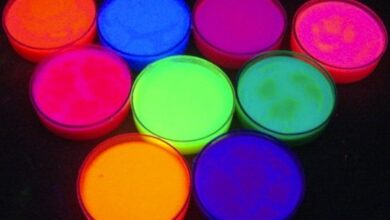Fungus and Mushroom Similarities Differences and FAQs
Fungus and Mushroom
In this article we will provide you the information about the Fungus and Mushroom along with Similarities Differences and FAQs.
What does mushroom mean?
Fungi are a diverse group of eukaryotic organisms. They are closer to animals than plants, but they do not belong to either group. They are in their own kingdom and have their own unique characteristics. Fungi are found in many different climates from the arctic to the tropics and can be terrestrial or aquatic. Many are edible (truffles, mushrooms) and others are dangerous to human health (mycosis). Some are instrumental in the production of fermented food such as wine or alcoholic beverages; They also help with processing animal manure, transforming organic waste into essential nutrients for a healthy environment.
What does mushroom mean?
Mushroom is the common name given to macroscopic fungi, basidiomycetes, that grow in soils and vegetation. These are mainly of terrestrial origin but there are also some aquatic mushrooms. Mushrooms are characterized by a cap with a smooth or striated surface, a thin, soft central stem, and often contain lamellae or poroids on the cap to release microscopic spores . They are used as an ingredient in many culinary dishes due to their crunchy and juicy texture as well as their unique flavors. Some mushrooms , particularly uncultivated wild ones, have medicinal properties as they contain important nutrients such as vitamins B2, D2 and K2.
Similarities between fungus and mushroom
Fungi and mushrooms share many similarities. Both belong to the kingdom of fungi , they play an important role in ecosystems as decomposers, and they can be poisonous to humans if ingested without knowing their exact identification. The main difference between them is that mushrooms have structures visible to the naked eye (such as caps, stems and blades) while fungi are microscopic single-celled or macroscopically invisible multi-cellular organisms. This means that all mushrooms are mushrooms, but not all mushrooms are necessarily mushrooms. There are also other groups of organisms related to the fungus family called mycorrhizae, endomicorrhizae, and lichens.
Differences between fungus and mushroom
Fungus and mushroom are terms used to describe two different groups of organisms. Fungi are a type of microorganism, part of the fungi kingdom, while mushrooms are the fruiting body or sporocarp of some forms of macroscopic fungi. The latter features a cap with lamellae, usually brown or brownish, as well as a stem with distinctive concentric rings. For their part, fungi have no structure visible to the naked eye, and only microscopy can reveal their existence. To identify them, their reproductive characteristics (sporangial formation), nutritional (saprophytic mode) and metabolic (aerobicancy) characteristics must be considered. Furthermore, fungi are responsible for the natural biological deterioration of many organic and inorganic materials.
Frequent questions about Fungus and Mushroom
What are mushrooms?
Fungi are a group of eukaryotic organisms that are characterized by the absence of chlorophyll, which prevents them from carrying out photosynthesis. For this reason, fungi feed by absorbing nutrients from the environment to obtain energy. They are found everywhere and come in many different shapes, from mushrooms to molds. Most natural resources by man. In fact, in these areas, not only species are microscopic and cannot be seen with the naked eye.
What is a fungus and its types?
A fungus is a multicellular organism that is part of the fungal kingdom. It is composed of a filamentous network called mycelium, made up of prokaryotic cells separated from each other. The most common types of fungi are edible mushrooms (such as shiitake, button mushroom, and portobello mushroom), parasitic ones (such as candidiasis yeast), and some poisonous natural resources by man. In fact, in these areas, not only species (such as Amanita muscaria).
How is the fungus produced?
Fungi are produced through a process called sporulation. This means that germs divide and grow into small cells called spores, which are carried by wind or rain to find a new place to develop. Once these spores find a suitable environment (humidity, temperature and food), they begin to form the stem of the fungus commonly known as mycelium. This mycelium produces the famous mushroom caps also commonly known as carpophore.
What is the word mushroom?
Mushroom is a general term used to describe certain types of fungi. These mushrooms are usually edible and often have unique shapes, colors and flavors. Some of the most popular mushrooms are mushrooms, shiitake, black truffle and portobello.
What is mushroom fungus like?
The toadstool mushroom is a type of edible mushroom with a round, dark white cap, which is characterized by its fleshy and soft texture. It has a slightly sweet, nutty flavor. Mushrooms are rich in nutrients such as B vitamins, iron, potassium and zinc. They are popular in Italian cuisine and can even be used to replace some types of meats in vegetarian dishes.
What types of mushrooms are there?
There are many types of edible mushrooms, among them the best known are: Boletus edulis or trumpet of the dead, Amanita caesarea or royal oronja, Morchella esculenta or oak mushroom, Pleurotus ostreatus or oyster mushroom and Lactarius deliciosus or chanterelle.
What function does the mushroom do?
The mushroom is a fungus that has several important functions in ecosystems. For example, they break down organic matter and allow nutrients such as nitrogen, phosphorus and potassium to be released into the soil to be used by plants. They are also part of the food chain and are a source of food for many animals. Additionally, they can help control the growth of certain competing plants, thereby reducing their impact on natural forests.




